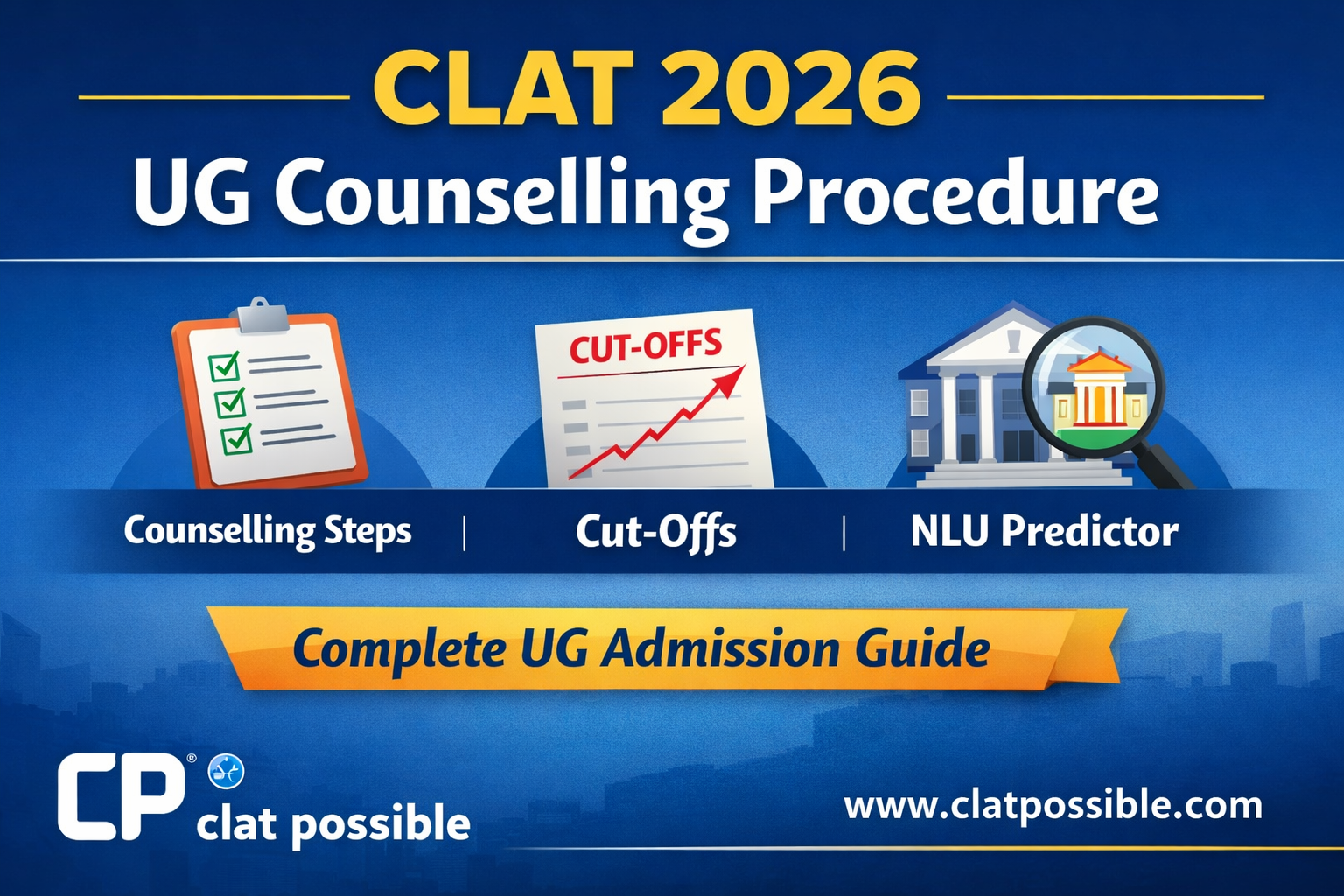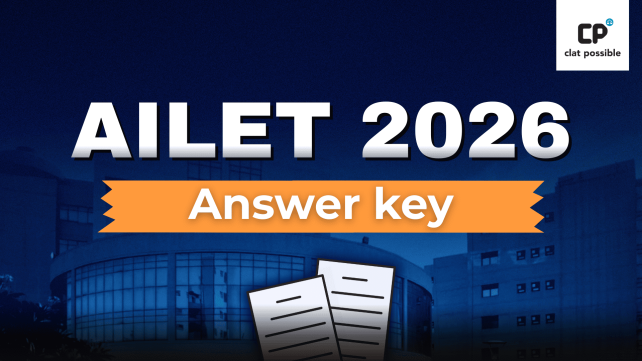By I Aug 06, 2024
Reading comprehension is a vital part of the CLAT English section. Excelling in it can significantly boost your overall score. This article will guide you through various techniques and strategies to master reading comprehension, making your preparation for the CLAT exam more effective.
Key Takeaways
- Simplify passages to understand them better.
- Practice reading daily from different genres.
- Analyze editorials to improve comprehension skills.
- Learn new words regularly to build vocabulary.
- Use practice tests to track your progress.
Effective Techniques for Mastering Reading Comprehension
Mastering reading comprehension is crucial for excelling in exams like CLAT. Here are some effective techniques to help you improve your skills.
Building a Strong Vocabulary for Better Comprehension
A strong vocabulary is essential for mastering reading comprehension, especially for exams like CLAT. It not only helps in understanding the passages better but also boosts overall confidence.
Learning New Words
To build a robust vocabulary, aim to learn at least 20 new words daily. Use reputable sources like The Hindu and Indian Express for this purpose. Transform unfamiliar words into familiar allies through mnemonics, word clusters, or etymology. Regular self-assessment is key to retaining these new words.
Using Context Clues
When you come across a new word while reading, try to understand its meaning using context clues. This technique not only helps in grasping the meaning of the word but also enhances your comprehension skills. Focus on high-frequency vocabulary to ensure you are well-prepared for the exam.
Regular Practice and Revision
Consistent practice and revision are crucial for retaining new vocabulary. Make it a habit to review the words you have learned regularly. This will help in solidifying your understanding and ensure that you can recall them during the exam.
A rich vocabulary is your secret weapon, unlocking doors to nuanced understanding. Aim to learn a minimum of 20 new words daily, drawing inspiration from reputable sources like The Hindu and Indian Express.
Strategies to Improve Reading Speed and Accuracy
Improving your reading speed and accuracy is crucial for excelling in the CLAT exam. Here are some effective strategies to help you master this skill.
Timed Reading Sessions
One of the best ways to enhance your reading speed is by practicing timed reading sessions. Set a timer for a specific duration and challenge yourself to read as much as possible within that time frame. This will help you get accustomed to reading under time constraints, similar to the actual exam conditions. Regular practice will make a significant difference in your reading speed.
Skimming and Scanning Techniques
Skimming and scanning are essential techniques for quickly identifying the main ideas and key points in a passage. Skimming involves quickly glancing through the text to get a general idea of the content, while scanning involves looking for specific information or keywords. These techniques are particularly useful for managing time during the exam.
Avoiding Regression
Regression, or the habit of re-reading sentences, can significantly slow down your reading speed. To avoid this, practice reading continuously without going back to previous sentences. Over time, this will help you become more confident in your comprehension abilities and reduce the urge to re-read.
Mastering these strategies will not only improve your reading speed but also enhance your overall comprehension skills, making you better prepared for the CLAT exam.
Common Mistakes to Avoid in Reading Comprehension
Reading comprehension is a crucial skill for mastering the CLAT exam. However, many students fall into common traps that can hinder their performance. Here are some mistakes to avoid to ensure you ace the reading comprehension section.
Overthinking the Passage
One of the most frequent mistakes is overthinking the passage. Students often let their preconceived notions interfere with their understanding. Stick to the author's main idea and avoid reading too much into the text. This will help you stay focused and accurate.
Ignoring the Author's Intent
Another common error is ignoring the author's intent. Understanding why the author wrote the passage can provide valuable insights into the correct answers. Pay attention to the tone and purpose of the text to better grasp the author's message.
Skipping Difficult Passages
Many students tend to skip difficult passages, thinking they will come back to them later. This can be a risky strategy. Instead, try to tackle these passages with a calm mind. Breaking down complex sentences and looking for context clues can make challenging sections more manageable.
Mastering reading comprehension for CLAT requires a balanced approach. Avoiding these common mistakes can significantly improve your performance and boost your confidence.
By being aware of these pitfalls, you can better prepare yourself to master the CLAT 2024 reading comprehension section. Remember, the key is to practice regularly and stay mindful of these common errors.
The Role of Critical Thinking in Reading Comprehension
Critical thinking is essential for excelling in reading comprehension, especially for exams like CLAT. It involves analyzing the text deeply and understanding the underlying meanings and intentions of the author. This skill helps in drawing inferences, identifying the tone and purpose, and making connections within the passage.
Drawing Inferences
Drawing inferences is about reading between the lines. It requires you to understand what is implied but not directly stated. This skill is crucial for answering questions that ask you to deduce information from the passage. Mastering this technique can significantly improve your performance in reading comprehension sections.
Identifying the Tone and Purpose
Understanding the tone and purpose of a passage helps in grasping the author's intent. Whether the passage is informative, persuasive, or narrative, recognizing the tone can guide you to the correct answers. This is particularly important in decoding CLAT's critical reasoning section.
Making Connections
Making connections involves linking different parts of the passage to form a coherent understanding. This technique helps in answering questions that require a comprehensive grasp of the text. By making connections, you can better understand the flow and structure of the passage, which is vital for mastering logical reasoning and reading comprehension.
Developing critical thinking skills is not just about reading more but reading smart. Practice regularly and challenge yourself with complex texts to enhance your analytical abilities.
Utilizing Practice Tests for CLAT Preparation
Practice tests are a crucial part of preparing for the CLAT exam. They help you understand the exam format, manage your time, and identify areas where you need improvement. Simulating exam conditions can make a big difference in your performance on the actual test day. By taking practice tests under timed conditions, you can get a feel for the pressure and pace of the real exam.
Reviewing incorrect answers is another important step. After completing a practice test, go through each question you got wrong and understand why you made the mistake. This will help you avoid similar errors in the future and improve your overall score.
Tracking progress is essential to see how much you have improved over time. Keep a record of your scores from each practice test and note any patterns or recurring mistakes. This will help you focus your study efforts on the areas that need the most attention.
From toppers’ desk: the ultimate guide to CLAT preparation with recommended books and resources by Delhi’s achievers. Key books for English, General Knowledge, and Quantitative Aptitude highlighted.
Resources for Enhancing Reading Comprehension Skills
Mastering reading comprehension for the CLAT exam requires the right resources. Here are some valuable tools to help you boost your efficiency and skills.
The Impact of Regular Reading on Overall CLAT Performance
Regular reading plays a crucial role in enhancing your performance in the CLAT exam. By making reading a daily habit, you can significantly improve your understanding of various passages, which is essential for the exam.
Improved Understanding of Passages
Reading regularly helps you get better at understanding different types of passages. This is important because the CLAT exam includes passages from various genres. Consistent reading allows you to become familiar with different writing styles and topics, making it easier to grasp the main ideas and details during the exam.
Better Analysis of Information
When you read often, you get better at analyzing information. This skill is vital for the CLAT exam, where you need to quickly understand and interpret the given passages. Regular reading helps you practice breaking down complex information into simpler parts, making it easier to answer questions accurately.
Enhanced Engagement with Content
Engaging with a variety of reading materials keeps your mind active and improves your focus. This is beneficial for the CLAT exam, where staying focused is key to understanding and answering questions correctly. Reading diverse content also helps you stay interested and motivated, which can positively impact your overall performance.
Regular reading not only improves your comprehension skills but also boosts your confidence in handling different types of passages during the CLAT exam.
Balancing Reading Comprehension with Other CLAT Sections
Balancing your preparation for the reading comprehension section with other parts of the CLAT exam is crucial for overall success. Effective time management and strategic planning can help you excel in all sections without feeling overwhelmed.
Balancing reading comprehension with other CLAT sections can be challenging, but it's crucial for success. Our expert tips and resources can help you master this balance. Visit our website to explore our comprehensive courses and start your journey to acing the CLAT today!
Conclusion
Mastering reading comprehension for the CLAT exam is not just about understanding passages but also about developing a consistent reading habit. By practicing regularly, you can improve your speed and accuracy, which will help you in all sections of the exam. Remember, reading is a skill that can be honed over time. With dedication and the right techniques, you can excel in the CLAT English section and boost your overall score. Keep practicing, stay focused, and you will see improvement.
Frequently Asked Questions
What is the Common Law Admission Test (CLAT)?
The Common Law Admission Test (CLAT) is a national-level entrance exam in India for admissions to undergraduate and postgraduate law programs at 25 out of 27 National Law Universities (NLUs). It tests skills like legal reasoning, logical reasoning, English comprehension, general knowledge, and quantitative techniques.
How can I improve my reading comprehension for CLAT?
To improve reading comprehension for CLAT, practice reading daily from various genres, simplify passages, and analyze editorials. Regular practice and focusing on understanding the author's intent can also help.
Why is building a strong vocabulary important for CLAT?
A strong vocabulary helps you understand passages better and answer comprehension questions more accurately. Learning new words, using context clues, and regular practice can enhance your vocabulary.
What strategies can help improve reading speed and accuracy?
Timed reading sessions, skimming and scanning techniques, and avoiding regression (re-reading) can help improve your reading speed and accuracy. Regular practice is key.
What are common mistakes to avoid in reading comprehension?
Common mistakes include overthinking the passage, ignoring the author's intent, and skipping difficult passages. Staying focused and understanding the main idea can help avoid these mistakes.
How does critical thinking play a role in reading comprehension?
Critical thinking helps in drawing inferences, identifying the tone and purpose of the passage, and making connections between ideas. This aids in better understanding and answering questions accurately.
How can practice tests help in CLAT preparation?
Practice tests simulate exam conditions, help you review incorrect answers, and track your progress. They can improve your time management and identify areas that need more practice.
What resources can enhance reading comprehension skills for CLAT?
Recommended books, online practice platforms, and joining study groups can help enhance your reading comprehension skills. Regular reading and practicing comprehension exercises are also beneficial.



